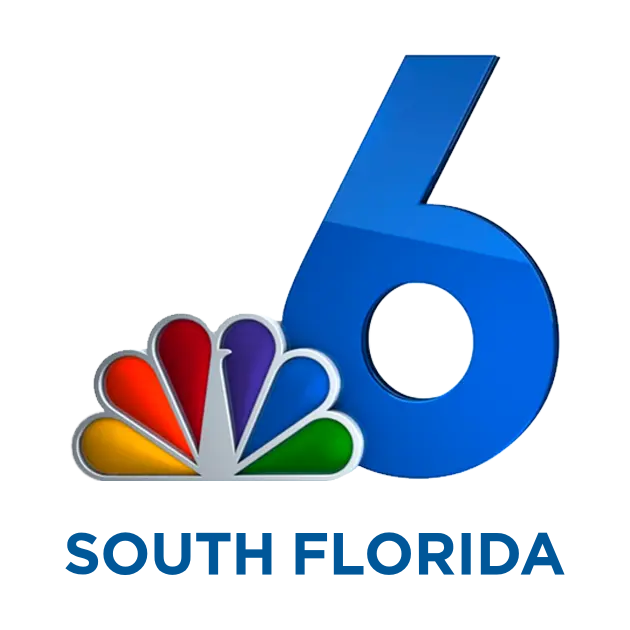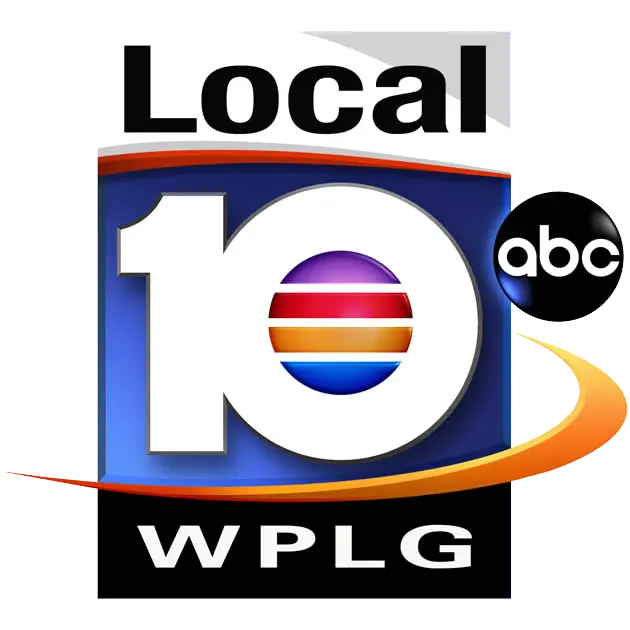















Parkland, Florida, is a thriving and picturesque city known for its park-like atmosphere and community-centric living. It has experienced a steady growth rate of 3.14% in recent years, reflecting its increasing popularity as a desirable place to live. The median age of Parkland’s residents is 38.4 years, indicating a balanced demographic that includes young families, professionals, and retirees.
Parkland is a residential haven and a hub of various economic activities. This smaller city employs over 15,000 people, with the most significant industries being Health Care & Social Assistance, Professional, Scientific, & Technical Services, and Finance & Insurance. These industries provide substantial employment opportunities, contributing to the city’s robust economy and residents enjoy a relatively high quality of life.
The city also strongly emphasizes education, with great schools including Westglades Elementary, Marjory Stoneman Douglas High School and institutions like Boca Beauty Academy-Parkland contributing to the local educational landscape by awarding degrees in various fields.
However, despite its many advantages, Parkland is not immune to accidents, especially slip and falls. The city’s bustling shopping centers, parks, and recreational areas can sometimes be the sites of these unfortunate events.
At Madalon Law, our team of Parkland slip and fall lawyers are experienced in these cases. Therefore, you can rest assured that we have the expertise, experience, and resources to build a winning case and ensure victims receive the compensation they deserve.
An injury-causing slip-and-fall incident happens when someone trips, falls, or slides on a property because of potentially dangerous conditions. Such incidents can be especially frightening since they may cause serious injuries such as sprains, fractures, brain trauma, and more. Both locals and visitors need to understand the particular circumstances and spots in Parkland where these tragedies might occur.
Here are some of the common places for slip-and-fall accidents in Parkland and neighboring areas:
Understanding the common causes of slip-and-fall accidents can help identify and mitigate risks. Here are some of the frequent hazards that lead to these incidents:
Wet and Slippery Surfaces
During the wet season, rain creates slippery conditions on sidewalks and parking lots, while sand and water tracked from the beach can make floors in seaside establishments hazardous. Property owners need to maintain cleanliness and conduct regular inspections to prevent accidents. Using warning signs and non-slip mats can protect patrons and employees from the risks of wet conditions.
Additionally, spills and cleaning activities can leave surfaces slippery, increasing the risk of slip-and-fall accidents, especially in outdoor parks and busy shopping centers.
Uneven or Damaged Walkways
Cracked sidewalks, uneven pavement, and potholes are prevalent hazards that can cause trips and falls. These issues are commonly found in older parts of the city or areas with high foot traffic, where constant use and weather exposure lead to deterioration. Such conditions pose significant risks, particularly for the elderly and individuals with mobility challenges.
Regular maintenance and timely repairs are crucial to prevent accidents and ensure pedestrian safety. Property owners and city maintenance teams should conduct frequent inspections to promptly identify and address these hazards.
Debris and Obstacles
Debris, fallen leaves, and other obstacles on walkways can cause people to trip, presenting a frequent hazard in parks and recreational areas where maintenance is only sometimes consistent. These obstacles can be particularly dangerous during the fall when leaves accumulate and in places where littering is common. Regular cleaning and maintenance are essential to keep these walkways safe for pedestrians.
To mitigate these risks, park management and maintenance teams should promptly implement scheduled clean-ups and inspections to remove debris and obstacles.
Inadequate Lighting
Poor lighting in parking lots, alleys, and pathways can obscure hazards, significantly increasing the risk of slip-and-fall accidents. This issue is particularly concerning in commercial areas and public parks where high foot traffic demands a safe environment.
Inadequate lighting can hide uneven surfaces, debris, and other obstacles, making it difficult for pedestrians to navigate safely, especially during the evening or night. Ensuring adequate lighting is essential for safety. Property owners and city planners should prioritize installing and maintaining sufficient lighting in these areas.
Lack of Proper Signage
Areas undergoing maintenance or with known hazards must be marked with warning signs to ensure public safety. Individuals may need to be aware of potential risks with proper signage, leading to accidents and injuries. This is especially critical in construction zones, areas with uneven terrain, or temporary hazards like spills or wet floors. Property managers and maintenance teams should prioritize the placement of visible and easily understandable warning signs in all areas where hazards exist. These signs should be strategically located to catch pedestrians’ attention and updated or replaced to reflect current conditions.
Slip-and-fall accidents can result in a wide range of injuries, some of which may have long-term or permanent effects. Understanding the types of injuries commonly associated with these accidents can help victims and their families recognize the severity of the situation and seek appropriate medical and legal assistance.
Fractures and Broken Bones
Fractures are among the most common injuries resulting from slip-and-fall accidents, with victims often suffering broken bones in their wrists, arms, ankles, or hips. These injuries frequently require immediate medical attention and can involve prolonged treatment, including surgery and physical therapy. For instance, a wrist fracture typically occurs when a person instinctively tries to break their fall with an outstretched hand, leading to a Colles’ fracture, one of the most common types.
Statistics highlight the severity of this issue. According to the National Safety Council, falls are the leading cause of non-fatal injuries in the United States, with more than 8 million hospital visits each year attributed to fall-related injuries. Among older adults, hip fractures are particularly concerning, as they can lead to significant complications and even increased mortality rates. The Centers for Disease Control and Prevention (CDC) reports that each year, over 300,000 older people are hospitalized for hip fractures, often due to falls.
Sprains and Strains
Slip-and-fall accidents frequently cause sprains and strains, particularly in the ankles and wrists. These injuries occur when ligaments or muscles are stretched or torn due to an abrupt fall. For instance, an ankle sprain often happens when the foot twists unnaturally during a fall, stretching or tearing the ligaments that support the joint. Similarly, wrist sprains can occur when a person instinctively tries to catch themselves during a fall, leading to overextension of the wrist ligaments.
While these injuries may not always require surgery, they can be extremely painful and significantly limit mobility, necessitating medical treatment and rehabilitation. Statistics show that sprains and strains are among the most common injuries resulting from falls. The National Safety Council reports that over 2 million annual fall-related injuries involve sprains and strains. These injuries can range from mild to severe, with severe cases requiring extended periods of rest, physical therapy, and even immobilization with splints or braces.
Head Injuries
Head injuries from slip-and-fall accidents are particularly concerning, ranging from mild concussions to severe traumatic brain injuries (TBI). Even minor head injuries can lead to significant health issues such as headaches, dizziness, and cognitive impairments. Severe TBIs can have long-lasting effects, impacting memory, behavior, and physical abilities, often requiring extensive medical treatment and rehabilitation.
The Centers for Disease Control and Prevention (CDC) report that falls are the leading cause of TBI-related hospitalizations. This underscores the critical need for preventive measures, such as proper walkway maintenance and safety equipment, like handrails and non-slip surfaces, to reduce the risk of head injuries.
Back and Spinal Cord Injuries
Falls can cause severe damage to the back and spinal cord, leading to chronic pain, herniated discs, or even paralysis. These injuries are particularly concerning as they can affect long-term mobility and quality of life. For instance, a herniated disc can occur when the impact of a fall forces a spinal disc out of place, compressing nearby nerves and causing significant pain and discomfort. Spinal cord injuries are especially severe and can result in permanent disability, requiring extensive medical care and rehabilitation.
The National Spinal Cord Injury Statistical Center (NSCISC) reports that falls are the second leading cause of spinal cord injuries in the United States. It highlights the critical need for safety measures such as using proper fall protection equipment, maintaining clear walkways, and providing adequate training to prevent such life-altering injuries.
Cuts and Bruises
While cuts and bruises from slip-and-fall accidents may seem minor, they can still be painful and often require medical attention. Deep cuts might need stitches to prevent infection and promote proper healing, while extensive bruising can signify more severe underlying injuries.
For instance, a deep cut on the leg from a fall on a sharp object might require immediate medical treatment to avoid complications. Bruising, particularly when extensive, can indicate more severe issues such as fractures or internal bleeding. Preventive measures, including keeping walkways clear of sharp objects and ensuring proper lighting, can help minimize the risk of cuts and bruises.
Shoulder Injuries
Shoulder injuries, including dislocations and fractures, are common in slip-and-fall accidents. These injuries often occur when victims instinctively use their arms to break their fall, placing excessive force on the shoulder joint. A shoulder dislocation happens when the upper arm bone pops out of the socket, causing severe pain and immobility. Fractures can involve the collarbone or the shoulder blade, both of which require medical intervention.
Proper treatment is essential for shoulder injuries to prevent long-term mobility issues. Dislocations typically need to be realigned by a medical professional, followed by immobilization and physical therapy. Fractures might require surgical intervention, especially if the bone is shattered or misaligned.
Knee Injuries
Knee injuries, such as torn ligaments or meniscus tears, are frequent in slip-and-fall accidents and can severely impact mobility. When a person falls, the knee can twist or bear an unusual load, leading to ligament injuries like an ACL tear or meniscus damage. These injuries are painful and significantly impair movement, making daily activities challenging.
Treatment for knee injuries often involves surgical repair followed by extensive physical therapy to restore full function. For instance, an ACL tear usually requires reconstructive surgery and several months of rehabilitation to regain strength and stability.
Nerve Damage
Nerve damage can occur if a fall impacts the body’s nervous system, leading to neuropathy. This type of injury results from the compression, stretching, or severing of nerves during the fall and can manifest as chronic pain, numbness, or tingling sensations in the affected areas.
For example, a person who falls and lands on their back may experience nerve damage in the spine, leading to persistent pain or loss of sensation in the legs. These symptoms can significantly affect daily life and may require long-term management, including medication, physical therapy, or surgical intervention.
Internal Injuries
Slip-and-fall accidents can sometimes cause internal injuries, such as organ damage or internal bleeding, which are particularly hazardous due to their often hidden nature. These injuries may not be immediately apparent, leading to delays in diagnosis and treatment that can result in severe complications.
For instance, a fall that causes a blunt force impact to the abdomen can damage internal organs like the liver or spleen, leading to internal bleeding that can be life-threatening if not promptly addressed. Prompt medical evaluation is crucial when a fall is suspected to have caused internal injuries.
Establishing culpability in a slip-and-fall lawsuit is essential to getting damages and injury compensation. Premises liability legislation that makes property owners and managers accountable for preserving safe conditions which applies to slip-and-fall cases in Parkland and other regions of Florida. Here are the key elements and steps involved in proving liability in a Parkland slip-and-fall case:
Key Elements to Establish Liability
Obligation to Exercise Care
The property owner or manager has a legal duty to ensure the safety of their premises for visitors. This duty varies depending on the visitor’s status (invitee, licensee, or trespasser). For instance, businesses owe a higher duty of care to their customers (invitees) than to trespassers.
For invitees, property owners must regularly inspect the premises for hazards, address any potential dangers promptly, and provide adequate warnings if immediate repair isn’t possible. This proactive approach is crucial to preventing accidents and ensuring a safe environment for all visitors.
Violating One’s Duties
The property owner or manager failed to fulfill their duty of care by allowing hazardous conditions to exist on the premises. This breach could involve not addressing known hazards, failing to conduct regular inspections, or not providing adequate warnings about potential dangers.
For example, if a property owner is aware of a broken step but does not repair it or warn visitors, this negligence constitutes a breach of their duty. Such failures can significantly increase the risk of accidents, highlighting the importance of diligent property maintenance and hazard management.
Causation
The duty violation directly brought on the slip-and-fall accident. The plaintiff must demonstrate that their injuries directly resulted from the hazardous condition the property owner or manager neglected to address. This involves showing a clear link between the breach of duty and the accident.
For instance, if a store owner fails to clean up a spill and a customer slips and falls, the causation element is satisfied by proving that the spill caused the fall and subsequent injuries.
Injuries
The plaintiff’s slip-and-fall incident resulted in damages. These losses cover medical bills, missed income, pain and suffering, and associated expenses. For example, a person who falls and breaks a leg may incur significant medical costs for treatment and rehabilitation, miss work during recovery, and experience ongoing pain and discomfort.
Documenting these damages is crucial in a lawsuit, as it quantifies the financial and emotional impact of the accident, strengthening the plaintiff’s claim for compensation.
Gathering Evidence
Photographs and Videos
Taking photos and videos of the accident scene immediately after the fall is critical. This visual evidence can capture the hazards that caused the fall, such as wet floors, uneven surfaces, or obstructions.
Witness Statements
Collecting contact information and statements from witnesses who saw the accident occur can provide valuable support for the claim. Witnesses can corroborate the presence of the hazard and the circumstances leading to the fall.
Incident Reports
Filing an incident report with the property owner or manager as soon as possible after the accident is essential. This report documents the details of the incident and can serve as evidence in the case.
Medical Records
Obtaining comprehensive medical records documenting the injuries sustained in the slip-and-fall accident is crucial. These records should include diagnoses, treatment plans, and any long-term prognosis related to the injuries.
Maintenance and Inspection
Records Requesting maintenance and inspection records from the property owner can help establish whether the property was regularly maintained and inspected for hazards. Lack of proper maintenance or failure to address known issues can support the negligence claim.
Importance of Timely Documentation and Reporting
Prompt Reporting
Reporting the slip-and-fall accident to the property owner or manager as soon as it occurs is vital. Delayed reporting can raise questions about the claim’s validity and make it harder to prove the hazardous condition existed at the time of the accident.
Preserving Evidence
Preserving any physical evidence related to the accident, such as the clothing and footwear worn at the time, can be significant. This evidence can help demonstrate the conditions that contributed to the fall.
Statute of Limitations
Florida’s statute of limitations for filing a slip-and-fall lawsuit is generally four years from the accident date. Please file within this timeframe to avoid losing the right to pursue compensation.
Role of Surveillance Footage
Requesting Video Footage
Many commercial properties and public places have surveillance cameras that might have captured the slip-and-fall accident. Requesting access to this footage can provide critical evidence of the incident and the conditions that caused it.
When a slip-and-fall accident occurs in Parkland, the injured party may be allowed various damages. These damages are intended to compensate the victim for the accident’s physical, emotional, and financial losses. Understanding the damages that can be claimed is essential for ensuring that victims receive fair compensation.
Economic Damages
Medical Expenses
This category includes all medical treatment costs related to injuries sustained in the slip-and-fall accident. It covers various expenses, such as hospital visits, medications, physical therapy, surgeries, hospital stays, and any future medical costs related to ongoing care.
For example, if the victim requires rehab or specialized medical equipment, these costs would be included in the compensation.
Lost Wages
When the victim cannot work due to serious injuries, they can claim compensation for lost wages. This includes the income they would have earned during the recovery period. For instance, if the victim misses several weeks or months of work, they can seek compensation for the lost salary, wages, or other earnings.
Loss of Earning Capacity
In cases where the injuries result in long-term or permanent disability, the victim may be eligible for compensation for losing future earning capacity. This accounts for the potential income they would have earned if the accident had not occurred.
For example, if a slip-and-fall accident leaves the victim unable to perform their previous job or reduces their ability to work full-time, they can seek damages for the resulting financial impact on their future earnings.
Property Damage
If personal property, such as clothing, electronic devices, or other items, was damaged during the slip-and-fall accident, the victim can claim compensation for the repair or replacement of these items.
For instance, if a person’s smartphone was broken during the fall, they could include the cost of repairing or replacing the phone in their claim. It ensures that the victim is compensated for their physical injuries and any financial losses associated with damaged personal belongings.
Non-Economic Damages
Emotional and Physical Suffering
This type of damage compensates the victim for the physical and emotional pain and distress caused by the accident and subsequent injuries. It accounts for the effect on the victim’s quality of life and overall well-being. For example, severe pain from injuries can lead to prolonged discomfort, and emotional suffering can significantly impact daily life and relationships.
Emotional Distress
Victims may experience significant emotional distress, including anxiety, post-traumatic stress disorder (PTSD), depression, or trauma, as a result of the accident. Compensation for emotional distress addresses the psychological impact of the injuries. For instance, a person who develops PTSD after a slip-and-fall accident may require therapy and experience ongoing fear and anxiety, affecting their mental health and daily functioning.
Loss of Enjoyment of Life
If the injuries prevent the victim from participating in activities and hobbies they once enjoyed, they may be allowed to get compensation for the loss of enjoyment of life. This could include being unable to play sports, travel, or engage in social activities, leading to frustration and sadness, significantly diminishing the victim’s happiness and satisfaction with life.
Loss of Consortium
In some cases, the spouse or family members of the injured party may be eligible to receive damages for loss of consortium. This compensation addresses the loss of companionship, support, and intimacy resulting from the victim’s injuries.
For example, if a spouse can no longer provide emotional or physical support due to their injuries, the other spouse may receive compensation for this loss, recognizing the profound impact on their relationship and family dynamics.
The amount of damages awarded in a slip-and-fall case can be influenced by various factors, including:
Severity of Injuries
The extent and severity of the injuries play a significant role in determining the damage amount. More severe injuries typically result in higher compensation. For instance, a minor sprain might result in minimal compensation, while a severe spinal injury requiring surgery and long-term care would warrant a substantially higher award.
Impact on Daily Life
The degree to which the injuries affect the victim’s ability to perform daily activities, work, and engage in recreational activities will influence the amount of non-economic damages awarded. For example, if the injuries prevent the victim from returning to their job or participating in hobbies they once enjoyed, the compensation for loss of enjoyment and decreased quality of life will be higher.
Duration of Recovery
The time required for recovery and any long-term or permanent disabilities resulting from the injuries will also affect the total compensation. A prolonged recovery period with ongoing medical treatments and rehabilitation or permanent disability that affects the victim’s future will increase the amount of damages awarded to cover these extensive needs.
Evidence of Negligence
The strength of the evidence proving the property owner’s negligence and liability can impact the damages awarded. Strong, clear evidence of negligence, such as witness testimonies, surveillance footage, or maintenance records showing failure to address hazards, can result in higher compensation. Solid evidence establishes the property owner’s responsibility and the extent of their inability to maintain a safe environment, which is crucial in determining the level of damages.
Although being in a slip-and-fall accident can be stressful, it’s important to act appropriately immediately to safeguard your safety and legal rights. Here are the essential actions to take after a slip-and-fall accident in Parkland:
Request Emergency Medical Assistance
Report the Incident
Document the Scene
Preserve Evidence
Avoid Making Statements
Understand Your Rights and Options with a Parkland Slip-and-Fall Lawyer
After a slip-and-fall accident in Parkland, you must understand your rights and available legal options. Consulting with an experienced Parkland slip-and-fall lawyer can help you navigate the complexities of your case and ensure that your rights are protected.
Evaluating Your Case
Legal Guidance and Support
Representation and Advocacy
Hiring a Parkland slip-and-fall attorney is crucial for many reasons. An experienced attorney can provide the expertise, resources, and support necessary to navigate the complexities of a slip-and-fall case and ensure you receive the compensation you deserve.
Expertise in Slip-and-Fall Law
Resources for Building a Strong Case
Maximizing Your Compensation
What should I do immediately after a slip-and-fall accident in Parkland?
Prioritize your health Immediately after a slip-and-fall accident by seeking medical attention. Report the incident to the property owner or manager, document the scene with photographs and videos, collect witness information, and preserve any evidence of the accident. Consult Parkland slip and fall lawyers before making statements or signing documents.
How do I prove liability in a slip-and-fall case?
You must establish that the owner or manager had a duty of care, breached that duty, and caused your injuries. Collecting evidence such as photographs, witness statements, incident reports, and maintenance records can support your claim. Parkland slip and fall attorneys can help you effectively gather and present this evidence.
What types of damages can I claim in a slip-and-fall case?
You can claim both economic and non-economic damages in a slip-and-fall case. Economic damages include medical expenses, lost wages, and property damage, while non-economic damages cover pain and suffering, emotional distress, and loss of enjoyment of life. A few cases might let you take punitive damages. Consulting with a Parkland slip-and-fall injury lawyer can help you understand the full extent of your claim.
How long do I have to file a slip-and-fall lawsuit in Parkland?
A. Florida’s statute of limitations for filing a slip-and-fall lawsuit is generally two years from the accident date. It is crucial to file within this timeframe to preserve your right to seek compensation. Slip and fall attorneys can ensure you meet all legal deadlines and requirements.
Do I need a slip-and-fall attorney to handle my case?
A. Hiring an attorney is not legally required, but having a slip-and-fall attorney can significantly improve your chances of obtaining fair compensation. An experienced attorney can navigate the legal process, gather evidence, discuss with insurance companies, and speak for you in court if necessary.
What evidence is essential in a slip-and-fall case?
A. Substantial evidence in a slip-and-fall case includes photographs and videos of the accident scene, witness statements, medical records, incident reports, and maintenance records from the property. Preserving clothing and footwear worn during the accident can also be helpful. Parkland slip and fall lawyers can assist you in collecting and maintaining this evidence.
How is payment determined in a slip-and-fall case?
Compensation in a slip-and-fall case is determined based on the severity of the injuries, the impact on the victim’s daily life, medical expenses, lost wages, and non-economic factors such as pain and suffering. An attorney can help accurately assess your damages and negotiate for fair compensation. Slip and fall lawyers in Parkland have the expertise to ensure you receive adequate compensation.
Can I still recover damages if I was partially at fault for the slip-and-fall accident?
Under Florida’s comparative negligence law, you can still recover damages even if you were partially at fault for the accident. However, your compensation will be reduced by the percentage of your fault. For example, if you were found 20% at fault, your compensation would be reduced by 20%. Parkland slip and fall attorneys can help you navigate this aspect of your case.
What is the role of a slip-and-fall attorney in my case?
A slip-and-fall attorney will provide legal advice, gather evidence, file necessary paperwork, talk with insurance companies, and speak for you in court. They aim to ensure you receive the maximum compensation for your injuries and losses.
At Madalon Law, our experienced Parkland slip-and-fall lawyers are dedicated to maximizing your compensation. We meticulously gather evidence and negotiate aggressively with insurance companies. Later, if necessary, speak in court to ensure you receive the payment you deserve. Trust our expertise to handle the complexities of your case, allowing you to focus on your recovery. Contact us for a free consultation today, and let us fight for your rights.